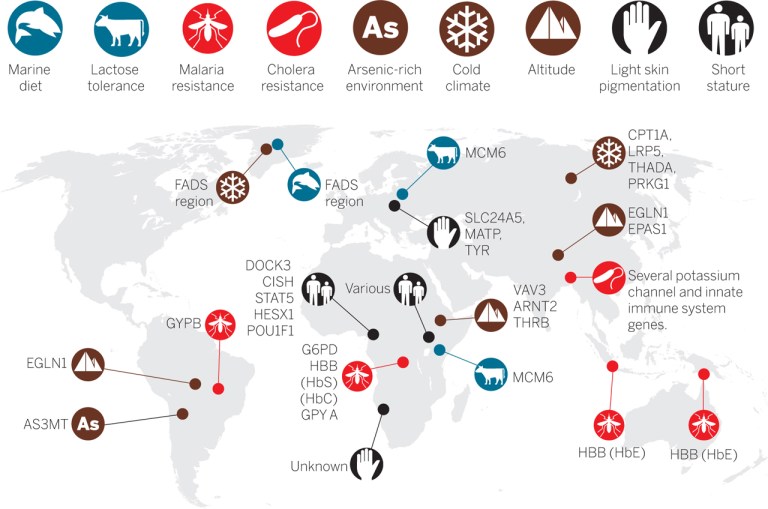I’ve discussed many types of mimicry over the years, and one of them is Müllerian mimicry, in which a group of species, often not that related, come to mimic each other in appearance. In this form of mimicry, the different species are all aposematic: that is, they have bright warning coloration and obvious patterns, all evolved to deter predators. (The form of mimicry is named after the German zoologist Fritz Müller.)
The way it usually works is that a group of species, often butterflies, are subject to predation, but are also unpalatable since they ingest plant compounds that are either toxic or can be converted to toxic ones. (Determination of unpalatability may involve tests with caged birds, observation of what a butterfly eats, or even, in the case of macho biologists, eating the butterfly itself, though human taste may not mimic butterfly taste).
At any rate, each species develops aposematic patterns and colors, which lets the predator know to stay away from the butterfly. This evolves not for the genetic sake of the bird, of course, but for the butterfly, as such coloration and obvious patterns give the aposematic individual a survival advantage over others. (How this occurs, which makes the initial individual conspicuous and perhaps more likely to be caught, is somewhat of a mystery, but there are some hypothesis that have been experimentally supported.)
Once you get some species of butterflies in one area that have warning colors and patterns, natural selection can then act to make their different colors and patterns come to resemble each other. That’s because if a bunch of toxic butterflies look alike, the predator learns to avoid them more readily (it has more chances to learn). Ergo, mutations in individual butterflies of different species that lead to a convergence in their appearance will be favored, reducing the chance of individuals being eaten by birds. This can lead to quite unrelated species of butterflies adopting similar colors and patterns. (Of course, all the lookalike Müllerian species, which can be quite unrelated—even including both butterflies and day-flying moths—must live in the same area, because this convergent evolution requires reinforcement by predators that can encounter all the mimics.)
Here’s a group of six unrelated butterflies that are part of a Müllerian mimicry ring. Each species is in a different genus! Moreover, there’s a moth species in there, too! Can you spot it? (answer at bottom). The photo is courtesy of Dr. Mathieu Joron, whose webpage is here, and is used with permission.

Note that there’s no need for species to be related to each other for this to happen, as the evolution of similar color patterns happens independently in each species, all mediated by visually hunting predators. A single Müllerian mimicry ring can involve true bugs (Hemiptera), wasps, beetles, and butterflies.
And different populations of a single species, if they live in different places that have other species of aposematic butterflies, can evolve different patterns in those different places to look like the local deterrents. Here’s an example of single species (the top four species are all Heliconius numata) that mimic other aposematic species in the genus Melinaea in different areas. Remember, the top four drawings are all members of the same species, but living in different areas. Further the caption notes, “the bottom four are H. melpomene (left) and H. erato (right), which mimic each other.” Thus in the bottom four we see two cases of Müllerian mimicry.
As you see, things can get quite complicated.

Butterflies in the genis Heliconius are particularly famous for showing Müllerian mimicry, and feature largely in a new paper from PNAS. What the authors were studying was not the the patterns and colors of butterflies in Müllerian mimicry rings, but mimicry of their behavior. It’s easy to see resemblance in color and pattern, but biologists have largely neglected the very real possibility that because predators can see behavior as well as appearance, mimics might evolve to resemble each other in behavior, too. This is well known in salticid “jumping spiders”, which have evolved to mimic the walking behavior of ants. (Predators hate ants since they sting and often taste bad as well.) There’s a video of an ant-mimicking salticid at the bottom.
In this paper the author studied 29 species of heliconiine butterflies and 9 ithomiine species, belonging in total to 10 mimicry rings. They wanted to see if there was, in each mimicry ring, an evolution of similar “flight behavior”, because predators can see not only how a butterfly looks, but, when it’s on the wing, how it flies. They found that there was indeed evidence in each Müllerian mimicry ring that the species had evolved similar flight behaviors. Clearly, natural selection had altered flight behaviors within a ring to make the species flap more like the other ones, with the explanation being that predators learn to avoid not only certain color patterns, but also certain ways of flying.
(Note: I am imputing bird avoidance to their learning which species are toxic, but there’s no reason why birds cannot undergo genetic evolution via selection to innately avoid certain colors and behaviors since individuals with genes tending to cause such avoidance will be favored. (This is presumably because getting sick after a meal is something that natural selection would eliminate by favoring gene forms that instinctively avoid certain appearances and behaviors.)
Read the paper by clicking on the title, or see the pdf here.
I will be brief since the analysis is complicated, involving all kinds of corrections for wing size, relatedness, habitat, and other factors; and I’ll just give the conclusions.
For several members of each species, the authors used cameras to measure three aspects of flight:
- Flapping rate of the wings
- “Up angle” (the angle between the wings of an individual at the top of its upstroke)
- “Down angle” (likewise, but with the angle measured at the bottom of the downstroke)
And, lo and behold, when you correct for relatedness, wing size, ecological area, and other factors, the authors still found significant similarity between members of each of the ten mimicry rings they measured. This held, though, only for the first two parameters: flapping rate and up angle. There was little convergence among members in down angle, for reasons that aren’t clear (perhaps birds can’t see it as well. Here’s the authors’ tentative ad hoc explanation:
. . . down wing angles respond differently to selection exerted by predators and may be indicative of greater aerodynamic constraint on this trait. Fuller characterization of flight may provide stronger evidence of whether different components of flight are evolving under different selection pressures.
Here’s a figure from the paper showing the ten Müllerian mimicry rings they studied, each ring indicated by a different color. The groups’ conventional names are given by the key at upper left. The “tiger group” is the most famous.

But it gets even nicer, for the authors also looked at flight similarity between isolated populations of the same species that were members of different mimicry rings, which, as I said above, can happen They used populations of two species, Heliconius melpomene and H. erato. Again, different populations of each species appear to have evolved similar flapping rates and up angles (but not down angles) to species of the different mimicry rings they’ve joined.
The ages of these conspecific populations can be estimated from molecular data as less than half a million years, so the flight mimicry can evolve quite rapidly. As for the other species, well, some of them are not that related, being separated by up to 70 million years from their common ancestor.
The upshot: Müllerian mimicry is often thought of as visual phenomenon because it’s mediated by visually hunting predators. And it is, but the emphasis on vision has led biologists to concentrate on easily-discerned colors and patterns (birds have color vision). Yet vision can also detect behaviors—in this case flight behavior. This isn’t really a brand-new discovery, because mimetic behavior has clearly evolved in other cases. As I said, we see Batesian mimicry in which salticid spiders, which are edible, have evolved to walk like ants that are avoided by predators (see below). But the important lesson of this paper is that biologists studying visual mimicry should not neglect to look at behavior of animals and not just their appearance.
********************
To end, here’s a remarkable case in which an edible jumping spider has evolved to not only look very similar to weaver ants, which are avoided by predators, but also to walk like ants. This is a case of Batesian rather than Müllerian mimicry, but it does show mimetic evolution of behavior.
Answer to question above: Which species is the moth in the first picture above? It’s Chetone sp.! (Bottom left.)

















